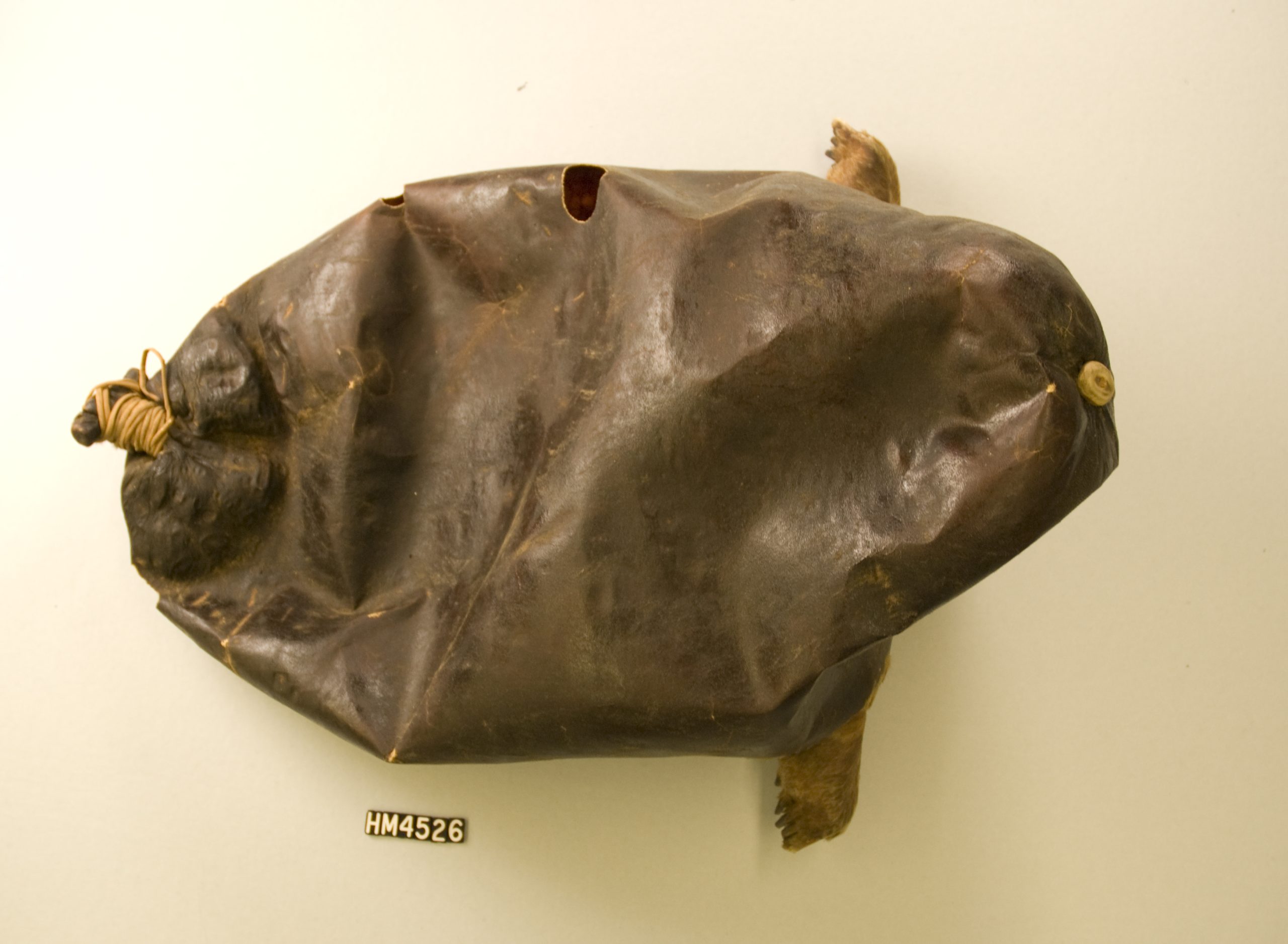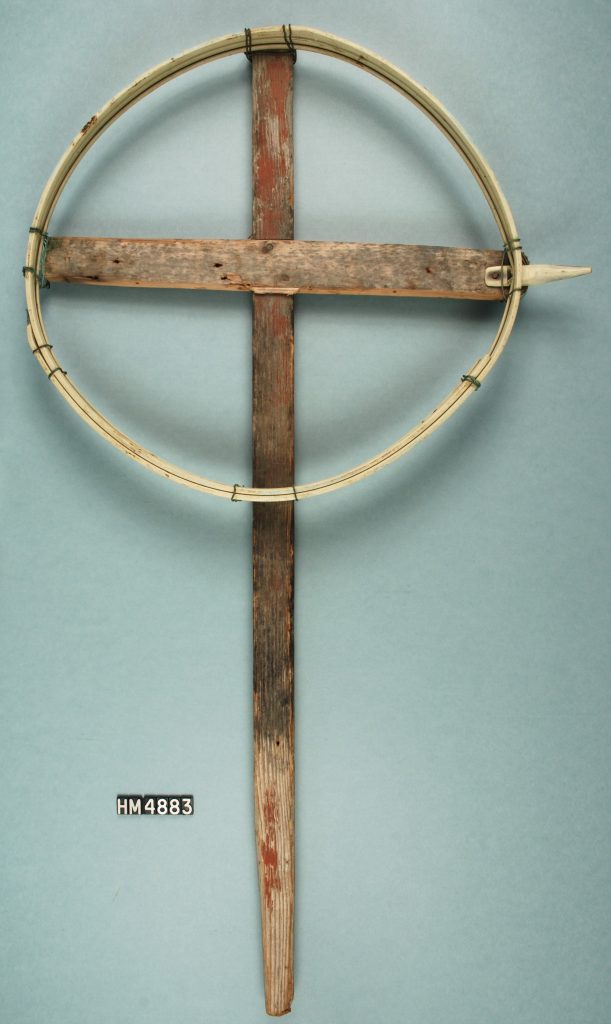Hudson Museum Scavenger Hunt: Kayak

Who made it?
This kayak was made in Nunavut, Canada on North Baffin Island, likely near Pond Inlet by the Nunatsiarmiut.
What is it made of?
This kayak is made of bearded seal skin, but it was also common to create watercraft from walrus hide. The frame is made of driftwood or reused wooden items.
How was it made?
Making a kayak is no easy task. It requires countless hours (sometimes thousands) to create a working kayak! The skins must first be prepared for sewing by chewing them to soften the hides. This resulted in considerably stronger jaw muscles in Inuit peoples. Fun fact: The world record jaw force is 975 pounds, recorded by an Inuit man!
After construction was completed, kayaks were made waterproof with whale fat, and bearded seal bladders were used to help make them buoyant (HM4526).
How was it used?
Hunting and fishing form an integral part of Inuit life, with animal products providing the vast majority of their food, as well as materials for clothing, housing, and tools. This kayak would have been used for both tasks, allowing hunters to approach and harpoon seals, for example, on floating ice and in the open water. The kayak came with both a sealskin float and a line rack called an asaloq.
To find the next code:
Turn to your right and walk toward the stele. Look for a comfortable seat in the case on your right. You can scan the QR code when you find it, or click here to continue.


